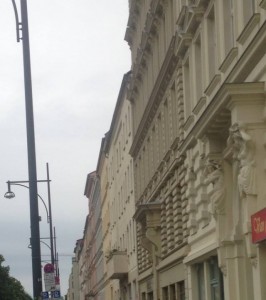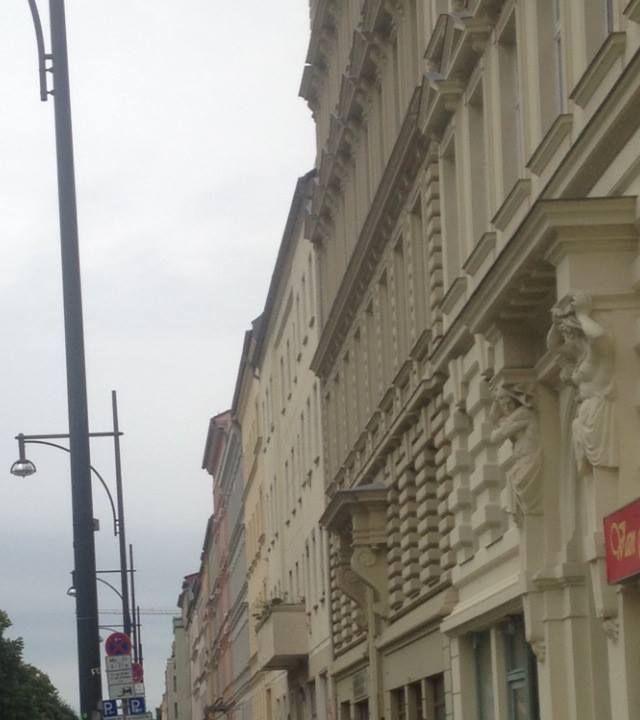![According to the published volume of selections from the archive, entitle Walter Benjamin's Archive, Benjamin “bemoaned the fact that, owing to his distance from Germany and the powerlessness that it implied, he was abandoned to an editorial board that ‘did not accomodate’ the manuscript ‘under its title or author,’ but rather printed it in scraps’ [...] Berlin Childhood counted for Benjamin as scrapped. It was one of his ‘shattered books’” (30). Ironically, as if there weren’t enough scraps and fragments to enchant and bewilder me for months in the archive, my much used English translation of Berlin Childhood has broken at the binding and unfortunately stayed true by its own accord to this shattering. It’s leaves now scatter my school bag, my friend’s apartment in Prenzlauer Berg where I am now staying, and mark other pages in the (perhaps too many) books I lugged here with me.](http://sites.gallatin.nyu.edu/dasr/files/2015/07/use-300x225.jpg)
“In my interior life I had more than once found inoculation to be a salutary procedure; therefore, in this situation, too, I relied on it and deliberately summoned before me those images which usually awaken feelings of homesickness forcefully, namely, images of childhood,
wrote Walter Benjamin in the forward to his work a Berlin Childhood circa 1900 as he prepared (starting 1932) for the departure from the city in which was raised, “perhaps forever“ (1). Yet despite the project’s difficult, even mournful, subjective inception for its author, this is a work that nonetheless resists being read according to biographical conflation, namely, through positing the child as the fluid, even illusive subject of the narrator’s grappling with memory. I was curious to explore how and why, in Berlin Childhood, the child’s perception, which devolves in and is shaped by the bourgeois interior/geography of the city, should in turn be transposed as the readable material debris that are a poignant site of reflection and critique for Benjamin. Perhaps this could be read in the relationship between form and content which, as Benjamin cites in Berlin Childhood, first struck him as a child confronting the interior of a stocking (77). But does this relationship correspond at all to mourning, memory traces, and Benjamin’s understanding of allegory? (But more on this in my next post.)

With these questions in mind, I visited Benjamin’s archive for the first time here in Berlin this week on the day–which I was later to discover–coincides with that on which he was actually born in 1892. But beyond this (at the time) unbeknownst biographical correspondence, I was struck by a few other external details I am not yet sure how to interpret . . . The first, rather literally, is Benjamin’s handwriting, an intriguingly gestural (yet not necessarily lucid) script certainly beyond my powers of entangling at the moment. And then there are the ways in which Benjamin arranged, marked, and aesthetically composed his notes. I grew fixated by a transcript of a dream that appears to have been typed with cobalt blue ink. Speaking of the logic of traces, and the complicity between form and content, I am feeling called to wander and allow myself to get a little more lost in the archive–perhaps with this dream transcript specifically–and further, of course, here in this city.
Oh, and a little bit about myself: I am a senior studying comparative literature and psychoanalysis.


Hi Arielle! I hope your time in Berlin has been fruitful. As I was reading your post, the phrase “topographical memory” came to mind. I’m lead to believe that Benjamin was positing his childhood memory as the means in which he wanted to presently map not only the physical terrain of Berlin, but its complicated and complex historical and socioeconomic geographies, perhaps to visually locate politics in the physical. I am just as fascinated in your examination of Benjamin’s penmanship; are you also planning on looking at alternative archives, such as voice recordings or photographs? I’m excited to hear more when you’re back!